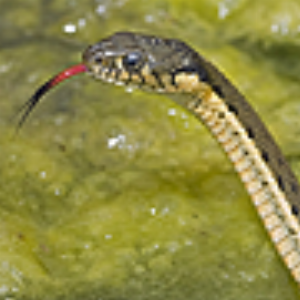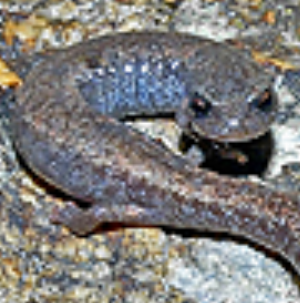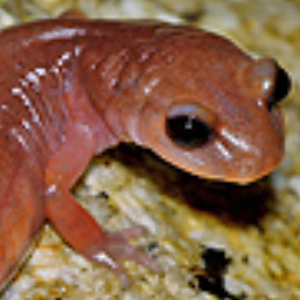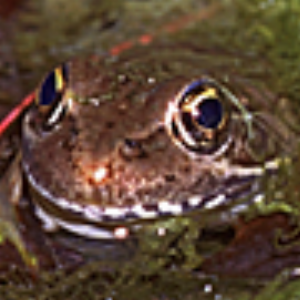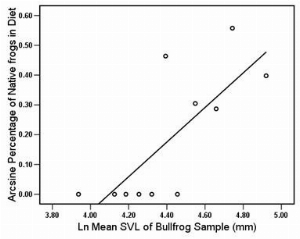Search ARMI Database
Search term(s)
Contribution Number
Search Results
879 record(s) found.
Papers & Reports Snake (colubridae: Thamnophis) predatory responses to chemical cues from native and introduced prey species
Authors: S J Mullin; H Imbert; J M Fish; Edward L Ervin; Robert N Fisher
Date: 2004 | Outlet: Southwestern Naturalist 49: 449-456
Papers & Reports Surface-dwelling and subterranean invertebrate fauna associated with giant reed (Arundo donax Poaceae) in southern California
Authors: J Lovich; Edward L Ervin; Robert N Fisher
Date: 2009 | Outlet: Southern California Academy of Sciences 108: 29-35
Papers & Reports Herpetological Monitoring Using a Pitfall Trapping Design in Southern California
Authors: Robert N Fisher; D C Stokes; Carlton J Rochester; Cheryl S Brehme; Stacie A Hathaway; T J Case
Date: 2008 | Outlet: USGS Open File Report
Papers & Reports Toward Immunogenetic Studies of amphibian chytridiomycosis: linking innate and acquired immunity
Authors: Jonathan Q Richmond; Anna E Savage; K R Zamudio; Erica B Rosenblum
Date: 2009 | Outlet: Bioscience 59: 311-320
Papers & Reports Are hotspots of evolutionary potential adequately protected in southern California?
Authors: A G Vandergast; Stacie A Hathaway; Robert N Fisher; Joshua A Boys; Andrew J Bohonak
Date: 2008 | Outlet: Biological Conservation 141: 1648–1664.
Papers & Reports Reptile and amphibian responses to large-scale wildfires in Southern California
Authors: Carlton J Rochester; Cheryl S Brehme; D R Clark; D S Stokes; Stacie A Hathaway; Robert N Fisher
Date: 2010 | Outlet: Journal of Herpetology 44:333-351
In 2003, southern California experienced several large fires that burned thousands of hectares of wildlife habitats and conserved lands. To investigate the effects of these fires on the reptile and
amphibian communities, we compared the results from prefire herpetofauna and vegetation sampling to two years of postfire sampling across 38 burned and 17 unburned plots. The sampling plots were spread over four vegetation types and four open space areas within San Diego County. Our capture results indicated that burned chaparral and coastal sage scrub plots lost herpetofaunal species diversity after the fires and displayed a significant shift in overall community structure. Shrub and tree cover at the burned plots, averaged across the second and third postfire years, had decreased by 53% in chaparral and 75% in coastal sage scrub. Additionally, postfire herpetofauna community structure at burned plots was more similar to that found in unburned grasslands. In grassland and woodland/riparian vegetation plots, where shrub and tree cover was not significantly affected by fires, we found no differences in the herpetofaunal species diversity or community composition. At the individual species level, Sceloporus occidentalis was the most abundant reptile in these areas both before and after the fires. We saw increases in the net capture rates for several lizard species, including Aspidoscelis tigris, Phrynosoma coronatum, and Uta stansburiana in burned chaparral plots and Aspidoscelis hyperythra and U. stansburiana in burned coastal sage scrub plots. The toad, Bufo boreas, was detected at significantly fewer burned plots in chaparral after the fires. Additionally, we documented decreases in the number of plots occupied by lizards (Elgaria multicarinata), salamanders(Batrachoseps major), and snakes (Coluber constrictor, Lampropeltis getula, Pituophis catenifer, andMasticophis lateralis) in coastal sage scrub and chaparral after the fires. We discuss the individual species results as they relate to such life-history traits as the susceptibility to initial mortality, the response to the altered postfire habitat, and shifts in the availability of potential prey. We foresee that a continued unnatural fire regime will result in a simplification of the southern California reptile and amphibian communities.
amphibian communities, we compared the results from prefire herpetofauna and vegetation sampling to two years of postfire sampling across 38 burned and 17 unburned plots. The sampling plots were spread over four vegetation types and four open space areas within San Diego County. Our capture results indicated that burned chaparral and coastal sage scrub plots lost herpetofaunal species diversity after the fires and displayed a significant shift in overall community structure. Shrub and tree cover at the burned plots, averaged across the second and third postfire years, had decreased by 53% in chaparral and 75% in coastal sage scrub. Additionally, postfire herpetofauna community structure at burned plots was more similar to that found in unburned grasslands. In grassland and woodland/riparian vegetation plots, where shrub and tree cover was not significantly affected by fires, we found no differences in the herpetofaunal species diversity or community composition. At the individual species level, Sceloporus occidentalis was the most abundant reptile in these areas both before and after the fires. We saw increases in the net capture rates for several lizard species, including Aspidoscelis tigris, Phrynosoma coronatum, and Uta stansburiana in burned chaparral plots and Aspidoscelis hyperythra and U. stansburiana in burned coastal sage scrub plots. The toad, Bufo boreas, was detected at significantly fewer burned plots in chaparral after the fires. Additionally, we documented decreases in the number of plots occupied by lizards (Elgaria multicarinata), salamanders(Batrachoseps major), and snakes (Coluber constrictor, Lampropeltis getula, Pituophis catenifer, andMasticophis lateralis) in coastal sage scrub and chaparral after the fires. We discuss the individual species results as they relate to such life-history traits as the susceptibility to initial mortality, the response to the altered postfire habitat, and shifts in the availability of potential prey. We foresee that a continued unnatural fire regime will result in a simplification of the southern California reptile and amphibian communities.
Papers & Reports Developing terrestrial, multi-taxon indices of biological integrity: an example from coastal sage scrub
Authors: J Diffendorfer; G M Fleming; Duggan; R E Chapman; M E Rahn; M J Mitrovich; Robert N Fisher
Date: 2007 | Outlet: Biological Conservation 140: 130-141
Papers & Reports Effect of species rarity on the accuracy of species distribution models for reptiles and amphibians in southern California
Authors: J Franklin; K E Wejnert; Stacie A Hathaway; Carlton J Rochester; Robert N Fisher
Date: 2009 | Outlet: Diversity and Distributions 15: 167-177
Papers & Reports Effects of artificial night lighting on amphibians and reptiles in urban environments.
Authors: G Perry; Bryant W Buchanan; Robert N Fisher; M Salmon; S E Wise
Date: 2008 | Outlet: Urban Herpetology 239-256
Papers & Reports Thamnophis hammondii (Two-striped Garter Snake). Foraging Behavior
Authors: Edward L Ervin; Robert N Fisher
Date: 2007 | Outlet: Herpetological Review 38: 345-346
Papers & Reports Bufo californicus (Arroyo Toad). Mortality
Authors: Edward L Ervin; D A Kisner; Robert N Fisher
Date: 2006 | Outlet: Herpetological Review 37: 199
Papers & Reports Mine spoil prairies expand critical habitat for endangered and threatened amphibian and reptile species
Authors: Michael J Lannoo; V C Kinney; J L Heemeyer; N J Engbrecht; A L Gallant; R W Klaver
Date: 2009 | Outlet: Diversity 1: 118-132
Papers & Reports Using ground-placed PVC pipes to monitor hylid treefrogs – Capture biases
Authors: M Zacharow; William J Barichivich; Kenneth C Dodd
Date: 2003 | Outlet: Southeastern Naturalist 2: 575-590
We sampled a population of two species of hylid treefrogs using 90 vertical ground-placed PVC pipes of 3 diameters positioned along a 1500-m transect at a forest-open pond ecotone in north-central Florida in order to identify potential capture biases. We recorded 1,981 treefrog observations (778 unmarked, 1,203 recaptures) in 8 months. Our results identified species-specific seasonal and weather-related variation in capture by pipe diameter and pipe location. These biases may limit the usefulness of this sampling technique when monitoring long-term treefrog population status and trends.
Papers & Reports Demography of the Columbia spotted frog (Rana luteiventris) in the presence or absence of fish in the Absaroka-Beartooth Wilderness, Montana
Authors: A Wyrick
Date: 2004 | Outlet: Thesis. Missoula: University of Montana
Papers & Reports Diet of introduced bullfrogs (Rana catesbeiana): predation on and diet overlap with native frogs on Daishan Island, China
Authors: Z Wu; Y Li; Y Wang; Michael J Adams
Date: 2005-12-01 | Outlet: Journal of Herpetology 39: 668-674
We examined diet of introduced Bullfrogs (Rana catesbeiana) and three native frog species (R. limnocharis, R. nigromaculata and Bufo bufo gargarizans) co-occurring at a group of ponds on Daishan Island, east of China, to gain insight into the nature of potential interactions between Bullfrogs and native frog species. For postmetamorphic Bullfrogs, aquatic prey items dominated volumetrically. Prey size, diet volume and volumetric percentage of native frogs in diet increased with Bullfrog body size. The number and volumetric percentage of native frogs in the diet were not different for female and male Bullfrogs, and both were higher for adults than for juveniles. Diet overlap between males and juveniles was higher than that between males and females and between females and juveniles. Diet overlap with each native frog species of male Bullfrogs was lower than that of female Bullfrogs and juvenile Bullfrogs. We did not exam effects of Bullfrogs on native frogs but our results suggest that the primary threat posed by juvenile Bullfrogs to native frogs on Daishan Island is competition for food while the primary threat posed by male Bullfrogs is direct predation. Female Bullfrogs may threaten native frogs by both competition and predation. These differences among Bullfrog groups may be attributed to differences in body size and microhabitat use.
Papers & Reports Field guide to amphibians and reptiles of Montana
Authors: J K Werner; B A Maxell; D Flath; D P Hendricks
Date: 2004 | Outlet: Missoula, MT: Mountain Press 268
Papers & Reports Evidence of decline for Bufo boreas and Rana luteiventris in and around the northern Great Basin, western USA.
Authors: W H Wente; Michael J Adams; Christopher A Pearl
Date: 2005 | Outlet: Alytes 23: 95-108
Revisiting historical amphibian sites can provide a relatively fast assessment of amphibian status in a region. Between 2000 and 2003 we repeatedly surveyed historically documented sites for two species of concern in the northern Great Basin: the western toad (Bufo boreas), and the Columbia spotted frog (Rana luteiventris). Both of these species have experienced population declines in other parts of their ranges but their status was relatively unknown in our study area. We estimate that B. boreas occupies 49.5% (34.1% - 65.0%) of 34 historical sites and that R. luteiventris occupies 52.9% (43.5% - 62.3%) of its 30 historical sites. B. boreas was more likely to be detected at human-altered sites while R. luteiventris was more likely to be detected at sites that were deeper than other sites in our study. B. boreas was detected at three of 41 (7.3%) potential sites (located near historic sites) while R. luteiventris was detected at six of 16 (37.5%). At 187 randomly selected sites, B. boreas was detected at one and R. luteiventris at three sites. Given that the number of historical sites available for resurveys was small, these results should be interpreted with caution. Moreover, a species can shift its distribution away from historical sites due to habitat succession or metapopulation dynamics without necessarily declining. We suggest that there is sufficient evidence to conclude that B. boreas and R. luteiventris have declined in and around the northern Great Basin. However, relatively high occupancy of Potential Sites by R. luteiventris suggests they may not have declined as much as B. boreas in the region we surveyed.
Papers & Reports Amphibian populations in the terrestrial environment: Is there evidence of declines of terrestrial forest amphibians in northwestern California?
Authors: H H Welsh; Gary M Fellers; A J Lind
Date: 2007 | Outlet: Journal of Herpetology 49: 469-482
Papers & Reports Modeling anuran detection and site occupancy on North American Amphibian Monitoring Program (NAAMP) routes in Maryland
Authors: L A Weir; J A Royle; Priya Nanjappa; R E Jung
Date: 2005 | Outlet: Journal of Herpetology 39: 627-639
Papers & Reports A comparison of internal and external radio transmitters with Northern Leopard Frogs (Rana pipiens)
Authors: S E Weick; M Knutson; B C Knights; B C Pember
Date: 2005 | Outlet: Herpetological Review 36: 415-421

